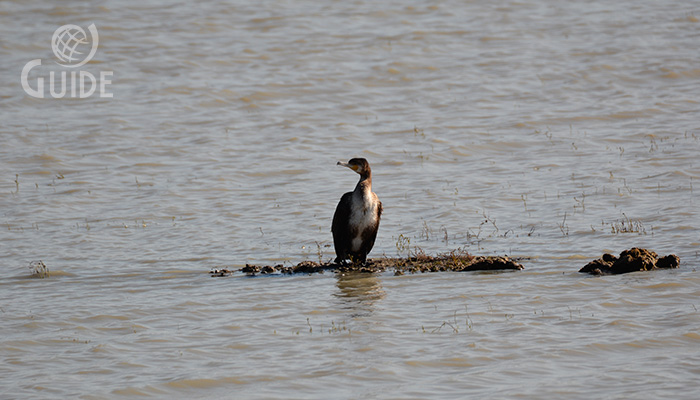
English: Great Cormorant
Russian: Большой баклан
German: Kormoran
French: Grand
Cormoran
Mongolian: Тураг гогой
Japanese:カワウ(Kawa-u)
Body length:
77-94cm
Wing span: 121-149 cm
Breeding visitor
Breeding season: May-August
Egg number: 3-4 (occasionally 5-6)
Egg color: Pale blue, unmarked.
Brood: 1 per year.
Global status: Least concern
Regional status: Least concern
Food: Insects, small and medium-sized fishes,
and young frogs.
Habitat: Breeds
on cliff-ledges along sea coasts or in trees at lakes or coasts, at times in
reedbeds or on ground. Northern birds migratory, British & Irish disperse
locally. Roosts on sandbanks, rocks or take-net poles etc., often in large,
dense flocks. Nest of seaweed, reed, twigs. Tree-nesting birds eventually kill
their droppings. Numbers have increased recently.
Identification:
Large with long, thick neck. Head profile rather wedge-shaped and angular, bill
strong. In flight superficially goose-like (similar size and wingbeat rate,
neck outstretched, often flying at some flying at some height, incl. over land,
generally in formation when in flock), but told by incidence of brief glides breaking
active flight, by slightly shallower wingbeats, longer tail, kinked neck, and
less orderly flock formation; also bill and tail held rather high. Single birds
often fly low over the water. Swims with body low and bill pointing up, and at
long range could be confused with Yellow-billed Loon, but note angular
hindcrown, more erect neck and more strongly inclined bill, and habit of
frequently leaping into dive, and of usually diving without prior surveillance
with head submerged in water, so typical of loons.
- Adult:
Black with bluish and some green gloss (amount of green not sufficient for
picking out ssp.), wings tinged bronze and scaled black. Bare skin at base of
lower mandible yellow, surrounded by white area. A white thigh patch is worn in
early breeding season only (often lost as early as Jun). Crown and hindneck
with varying amount of white feathers, on average more on hold birds and in
spp. sinensis (but overlap considerable); much of these white feathers lost
during summer. In winter less glossy, and white on cheeks and throat becomes
duller and less clear-cut.
- Juvenile:
Dark brown above, underparts with varying amount of white, generally on centre
of throat, breast and belly. 1st-year birds can look very white beneath, or
have patchy breast and belly with contrast between pure white and dark streaks.